The art of treating the Acne is by customizing the treatment according to Skin type...!
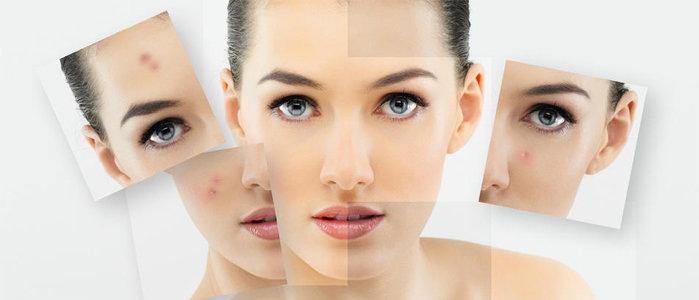
Introduction
 Acne, a common cause of facial scars, commences during puberty and can continue to be a formidable challenge through life.
Acne, a common cause of facial scars, commences during puberty and can continue to be a formidable challenge through life. The severity of acne can range from mild (small eruptions) to severe (cysts and nodules).
The severity of acne can range from mild (small eruptions) to severe (cysts and nodules).
What causes Acne?
 Small sebaceous glands lie under our skin and secrete oil (sebum) that moisturizes our skin. During puberty, however, triggered by hormonal changes some types of skin with overactive sebaceous glands secrete excess sebum that can get clogged. These clogged glands act as reservoirs for bacterial overgrowth – leading to inflammation and infection.
Small sebaceous glands lie under our skin and secrete oil (sebum) that moisturizes our skin. During puberty, however, triggered by hormonal changes some types of skin with overactive sebaceous glands secrete excess sebum that can get clogged. These clogged glands act as reservoirs for bacterial overgrowth – leading to inflammation and infection. In addition, stress, poor diet and unhealthy lifestyles can add to hormonal stress and enhance acne formation.
In addition, stress, poor diet and unhealthy lifestyles can add to hormonal stress and enhance acne formation.
What are the treatment options for Acne?
 Even though various over-the-counter medications are available for the treatment of acne, the recommended treatment relies on skin-type.
Even though various over-the-counter medications are available for the treatment of acne, the recommended treatment relies on skin-type. At GEM SKIN HAIR AND LASER CENTRE we perfect the medical art of treating acne by skin-typing and customizing treatment for each individual.
At GEM SKIN HAIR AND LASER CENTRE we perfect the medical art of treating acne by skin-typing and customizing treatment for each individual. Treatment for acne varies from Topical and oral anti-acne medications, combined with highly advanced combinational uses of LASERs (US-FDA / CE approved), radiofrequency and dermal peels – focusing on eradicating acne, thus leaving behind scar-free skin that you can be proud of.
Treatment for acne varies from Topical and oral anti-acne medications, combined with highly advanced combinational uses of LASERs (US-FDA / CE approved), radiofrequency and dermal peels – focusing on eradicating acne, thus leaving behind scar-free skin that you can be proud of.
How much time and duration is required for the treatment?
 Time required for each session: Dermal peels — approximately 15 minutes for the entire procedure. Depending on the type of skin, LASERs may require 15 minutes for treatment.
Time required for each session: Dermal peels — approximately 15 minutes for the entire procedure. Depending on the type of skin, LASERs may require 15 minutes for treatment. Total duration of treatment: Combination of 4 LASERs and 4 Peels are required for best results, which can be a 3 to 6 months course depending on the intensity of Acne scar. Maintenance sessions may be required, which can be done once in 3 months.
Total duration of treatment: Combination of 4 LASERs and 4 Peels are required for best results, which can be a 3 to 6 months course depending on the intensity of Acne scar. Maintenance sessions may be required, which can be done once in 3 months.
 Before we start delving into what causes acne or how it can be prevented, it is important to know what acne is in the first place. Knowing acne growth stage and type will help you determine the best treatment your acne would need.
Before we start delving into what causes acne or how it can be prevented, it is important to know what acne is in the first place. Knowing acne growth stage and type will help you determine the best treatment your acne would need. Acne is one of the most common skin condition in the country which is actually a disease of the sebaceous or oil producing glands of the face, chest and back. Majorly affecting teenagers during puberty, some people tend to have acne after their thirties and until fifties. Teenage acne is the more common one and is majorly accounted to skin cleanliness, and bacteria, the latter i.e. adult acne can have certain medical conditions like hypo-thyroid, Poly Cystic Ovarian Syndrome (PCOS) or excess Testosterone generation at its root cause.
Acne is one of the most common skin condition in the country which is actually a disease of the sebaceous or oil producing glands of the face, chest and back. Majorly affecting teenagers during puberty, some people tend to have acne after their thirties and until fifties. Teenage acne is the more common one and is majorly accounted to skin cleanliness, and bacteria, the latter i.e. adult acne can have certain medical conditions like hypo-thyroid, Poly Cystic Ovarian Syndrome (PCOS) or excess Testosterone generation at its root cause.
Having a look at the science behind acne is important to know what in your skin has the possibility of developing into acne. Like it was said earlier, acne is a disease of hair follicles which get plugged by the excess sebum (oil) generated by the attached sebaceous (oil producing) glands. This appears as a whitehead when it is covered by a layer of skin. In case, it comes out, it becomes black due to oxidation on account of air contact and is called a Blackhead. Whiteheads and Blackheads are the non-inflammatory forms of acne (yes they are acne too) and that is why regular clean-ups are required to ensure that your pores do not turn into comedones (comedones are clogged pores).
The plugged hair follicle or comedone gradually enlarges resulting in rupturing of the skin layer and allowing entry to irritating substances and bacteria inside the skin which results in inflammation. Depending on the intensity of the access into the skin depths, the acne take the form of
 Papules (inflammation near the skin’s surface)
Papules (inflammation near the skin’s surface) Pustules (deeper inflammation resulting in pus formation which shows as a whiter or yellower top, also called pimples) and lastly.
Pustules (deeper inflammation resulting in pus formation which shows as a whiter or yellower top, also called pimples) and lastly. Severe acne which can be cysts, nodules or conglobata which appear as large reddish inflamed blemishes usually covering a large portion of the face, back or chest. These can last usually months and have a tendency to cause permanent damage to the skin
Severe acne which can be cysts, nodules or conglobata which appear as large reddish inflamed blemishes usually covering a large portion of the face, back or chest. These can last usually months and have a tendency to cause permanent damage to the skin
 The very basic advice is to follow your CTM (Cleansing-Toning-Moisturising) routine religiously. Another important thing to do is to not keep touching your face and eating healthy and maintaining a healthy lifestyle. Though stress and lack of sleep have not been directly related to cause pimples yet indirect relations in terms of causing hormonal imbalance and hence acne breakout have been established.
The very basic advice is to follow your CTM (Cleansing-Toning-Moisturising) routine religiously. Another important thing to do is to not keep touching your face and eating healthy and maintaining a healthy lifestyle. Though stress and lack of sleep have not been directly related to cause pimples yet indirect relations in terms of causing hormonal imbalance and hence acne breakout have been established. Also, avoid using heavy makeup as that can clog pores and aggravate acne concerns. Also, ensure to wash off your hair oil and conditioner properly in the head wash else they might cause face, back acne. Applying sunscreen and icing the skin after a day of shopping or beach holiday to avoid acne breakouts.
Also, avoid using heavy makeup as that can clog pores and aggravate acne concerns. Also, ensure to wash off your hair oil and conditioner properly in the head wash else they might cause face, back acne. Applying sunscreen and icing the skin after a day of shopping or beach holiday to avoid acne breakouts. It is advisable that you go for medi-facials (At GEM we have scientifically proven Medi Facials) instead of the usual clean-ups and facials every 4 to 6 weeks. This is because as against the usual facials which work on the skin, medifacial acne treatments are customised by the medical experts for the individual’s skin type. These Medifacials treat the skin from within thus unclogging the pores, helping to control the oil production in the sebaceous glands in specific and increasing the skin’s immunity in general.
It is advisable that you go for medi-facials (At GEM we have scientifically proven Medi Facials) instead of the usual clean-ups and facials every 4 to 6 weeks. This is because as against the usual facials which work on the skin, medifacial acne treatments are customised by the medical experts for the individual’s skin type. These Medifacials treat the skin from within thus unclogging the pores, helping to control the oil production in the sebaceous glands in specific and increasing the skin’s immunity in general.
GEM offers Acnefree ClearSkin treatment plan for acne which lasts for about 4 – 6 months. usage of Acne ClearSkin Laser device which is an US FDA approved laser for treating acne scarring. If you are looking for the best treatment for acne and acne scar then you are at the right place.
 After the cause has been determined and analysis of the patient’s skin type done, a treatment for those ailments which includes topical and relevant oral medications is prescribed. The doctor also asks for the hormonal profile to determine the actual cause of the acne. In certain cases, the patient is asked to consult an endocrinologist too and this treatment runs in parallel with the acne treatment.
After the cause has been determined and analysis of the patient’s skin type done, a treatment for those ailments which includes topical and relevant oral medications is prescribed. The doctor also asks for the hormonal profile to determine the actual cause of the acne. In certain cases, the patient is asked to consult an endocrinologist too and this treatment runs in parallel with the acne treatment. An initial clean-up is given to remove the bacteria and unclog the pores.
An initial clean-up is given to remove the bacteria and unclog the pores. Depending on the skin type, the treatments prescribed may include a combination of either of the following
Depending on the skin type, the treatments prescribed may include a combination of either of the following
- Oral Medication
- Chemical Peels
- Laser treatment for acne scars
- Topical medication to soothe and heal the skin
- Clean-ups/Med-facials using chemical peeling agents like Glycolic/Salicylic/Resorcinol/Retinol peels are recommended to decrease the chance of acne scars. The frequency and number of sessions required usually depends on the severity of the acne. The type of peels required again depends on the nature of the individual’s skin and the desired objectives of the treatment. The scars are finally treated using a combination of peels and laser treatment sessions to get a blemish free skin.
Myth: Acne is restricted to puberty only!
Fact: Though acne hits majorly due to hormonal imbalance during puberty yet adult acne is becoming increasingly common and in most cases can be very unsettling. Also, if the acne is happening beyond the usual teenage, it is important to get checked for any other underlying reasons such as thyroid, PCOS etc.
Myth: Acne is caused by dirt, keep your skin clean to avoid it
Fact: It is not dirt that causes acne for the bacteria Propionibacterium acnes (p. acnes) that causes acne is already on your skin. Washing face is recommended to keep the bacterial population in check. Also, too much cleaning and overzealous scrubbing will leave scratches and abrasions on your skin which would only make your acne worse.
Myth: Acne goes away on its own, basic skin care regime is all that it takes
Fact: Well NO! Acne just worsens on its own. Even if it is a benign looking non inflammatory whitehead, it can eventually become inflammatory one which would lead to infection and scarring; and in case it is the latter already, have an expert dermatologist consultation as soon as possible.
Myth: Popping pimples helps
Fact: Well, yes it does give you a sudden riddance from the pus filled pimply look but leaves behind acne scars which are even tougher to get rid of. Also, sometimes the pus that comes out thus, further spreads the acne to the nearby pores.
Myth: Sweating / Steaming helps get rid of acne
Fact: A steam bath or the like may open up your pores in general but when it comes to acne, high temperature and humidity provide better breeding grounds for the bacteria on your skin and the opened pores act as receptors to these which in turn worsens your acne
Myth: Drying out the acne in sun helps
Fact: Not at all because the sun reduces the immunity of the skin and also gives pigments and wrinkles. Having acne coupled with wrinkles and pigmentation does not seem such a good idea or does it?
Before and After Treatments at GEM SKIN , HAIR & LASER Centre...!
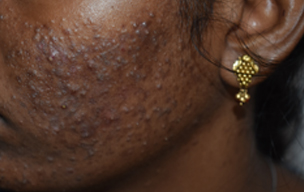
Before
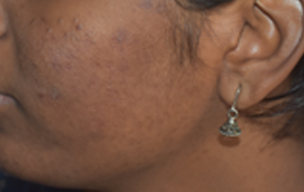
After
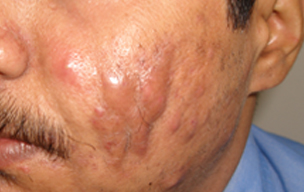
Before
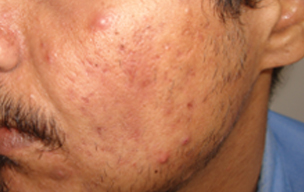
After
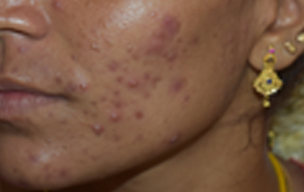
Before
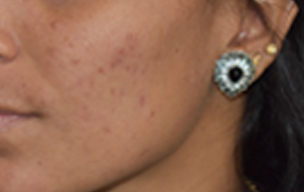
After

Before
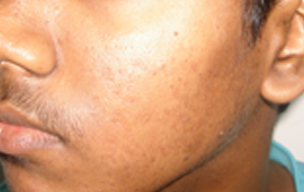
After
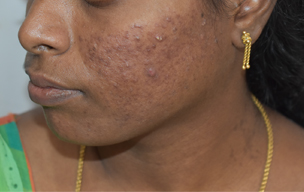
Before
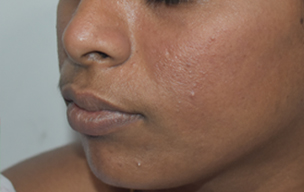
After
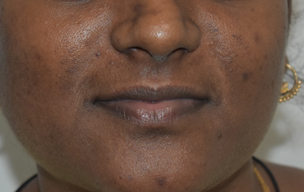
Before
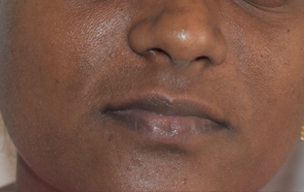
After



